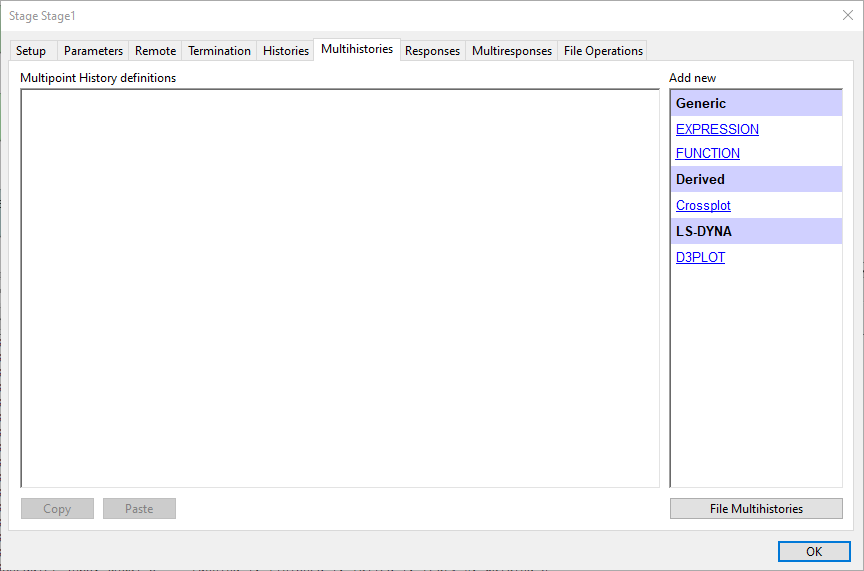-
-
February 4, 2022 at 9:42 am
Marense
SubscriberWe're going to use abaqus to check a plate that's been subjected to a load. The material properties are to consist of a variety of parameters. We heard we could do this using LS-opt. However, we dont want the model to be optimized. We need the results (forece displacement stress-strain) for each type of material. Does someone know if it is possible and how we can to this?
February 8, 2022 at 2:29 pmRam Gopisetti
Ansys Employeecheck the responses for the selected solver,
 then from these responses from ABACUS solver, find the response which can output the forces (SPCFORC in dyna) displacement and relevent stress and stain output for an element and then define a crossplot from Multihistories
then from these responses from ABACUS solver, find the response which can output the forces (SPCFORC in dyna) displacement and relevent stress and stain output for an element and then define a crossplot from Multihistories
 from here, its a direct, this will be written out in the solver directory.
from here, its a direct, this will be written out in the solver directory.
Cheers, Ram
February 11, 2022 at 7:50 pmigandiko
Ansys EmployeeIt is possible. You can select DOE task and generate different stress-strain curves for different parameter combinations. You can even optimize the material model to match computed stress-strain with experimental stress-strain curves.
In terms of the setup, you need to 1. define solver settings, 2. parameterize input file, and 3. extract computed stress-strain curves.
You can use "user-defined" solver as stage package in LS-OPT. Note that ls-opt will expect N o r m a l string in standard output of the solver job to know whether a job terminated normally or not. For user-defined solvers, you can use a script as solver command. The script will run abaqus in batch mode and echo N o r m a l after the job is completed. (or) If you are using ls-opt v7.0, select "use queuing -> Simple" under remote tab and then define termination criteria in "termination" tab.
The input file can be parameterized using LS-OPT generic format i.e. any field of the input file defined using double bracket format (<>) will be read as design variable in ls-opt.
For extracting stress-strain curves, you have a few options. a. If abaqus can write the curves to a file in two column format, copy this file as "LsoptHistory" and read it in LS-OPT using "user-defined" history option. For example, say abaqus dumps a file stress.txt with two coloumns of data (stress vs time), you can go to "histories" tab and define "user-defined" history. The command in Linux will be: cp stress.txt ./LsoptHistory; cat LsoptHistory (or) b. Use GenEx tool in ls-opt to extract columns of data from ascii files. You will have one history for stress, one for strain, then use "crossplot" to create stress vs. strain. The experimental data can be imported using "File history" option (located bottom right in "history" tab).
Viewing 2 reply threads- The topic ‘Using LS-opt for Abaqus’ is closed to new replies.
Ansys Innovation SpaceTrending discussionsTop Contributors-
3622
-
1303
-
1122
-
1068
-
1008
Top Rated Tags© 2025 Copyright ANSYS, Inc. All rights reserved.
Ansys does not support the usage of unauthorized Ansys software. Please visit www.ansys.com to obtain an official distribution.
-


Ansys Assistant

Welcome to Ansys Assistant!
An AI-based virtual assistant for active Ansys Academic Customers. Please login using your university issued email address.
Hey there, you are quite inquisitive! You have hit your hourly question limit. Please retry after '10' minutes. For questions, please reach out to ansyslearn@ansys.com.
RETRY







